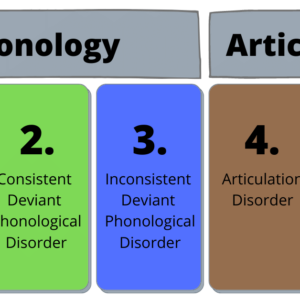Language Intervention for School-age Children with Down Syndrome
$15.00

Course Type: Video – 1 hour
ASHA Course Code: Developmental Language Disorders – 3010
Down Syndrome has unique cognitive, sensory, and physiological characteristics. Learn how to use a multi-modal approach to improve the intervention you give to children with Down Syndrome.
Appropriate, successful intervention can be provided for children with Down syndrome by understanding how the disorder impacts communication. This course includes a review of language development in individuals with Down syndrome, a discussion of evidence-based treatment methods, and a modified elementary level lesson plan to demonstrate successful intervention.
| Population | School Age |
|---|---|
| Topics | Exp/Rec Language |
| Duration | 1 hour |
| Credit | .1 Continuing Education Unit |
| Format | Video |
Financial Disclosure: Patricia Ybarra (Villarreal) M.S., CCC-SLP was an employee of Bilinguistics. Bilinguistics receives payment for online courses.
Non-Financial Disclosure: Patricia Ybarra does not have any non-financial relationships to disclose.
Financial Disclosure: Anna Ubels, M.S., CCC-SLP was an employee of Bilinguistics. Bilinguistics receives payment for online courses.
Non-Financial Disclosure: Anna Ubels does not have any non-financial relationships to disclose.
As speech pathologists working with children with Down syndrome it is crucial to understand that this population will inherently present with a specific profile of strengths and challenges in various domains such as cognition, language, social/emotional functioning and motor development. By understanding these predictable developmental sequences we are able to tailor intervention in such a way that it builds on strengths in order to improve relative areas of difficulty.
Choosing an appropriate intervention plan for working with children with Down syndrome can be challenging. The Total Communication approach to intervention ensures that children are exposed to multiple modalities during learning. Total Communication includes verbalization paired with additional communication systems. There are many options for alternative augmentative communication systems including sign, picture exchange communication systems (PECS), and voice output devices. The rationale for the implementation of these communication systems will be discussed, taking into account the strengths and challenges inherent to the disorder, as well as the child’s environment and daily needs at school. A side by side comparison of augmentative communication systems is included in the presentation not only for the purpose of selecting a system that will enhance the strengths of the individual, but also to understand that each augmentative system has its limitations. The goal for speech therapists working with children with Down syndrome is to support and strengthen functional communication by providing an alternative means to communicate effectively while developing and enhancing verbal skills. Once an appropriate communication system has been selected, the next challenge is implementing it and modifying intervention plans to fit within the student’s communication method. Within the context of the school setting, it is important for students to have the opportunity not only to learn new skills but to generalize to new people and environments.
Our clinical research has shown that when intervention is aligned with school curriculum, students are more successful at retaining and generalizing communication skills learned in therapy. Intervention plans that are based on academic subject matter are more relevant to students and allow speech therapists to more effectively collaborate with other professionals and parents. As a result of this collaboration, students are provided with frequent opportunities for the repetition of skills learned in therapy which studies show increases the development of communication in children. This presentation will outline a typical speech therapy intervention plan targeting a common academic theme, and provide suggestions on how to modify the plan using each of the communication systems. The same modifications used in therapy can then be carried over into the classroom during instructional time, maximizing student’s participation with peers. Research has shown that children with Down syndrome are highly motivated by social interaction and therefore are naturally reinforced for their use of appropriate and functional communication learned in therapy.
As a means to continue the successful use of multi-modal communication, speech therapists should model ways to build on the use of these strategies in existing routines and aid teachers in creating new routines for the implementation of functional communication throughout the day. This presentation will discuss ways to appropriately modify three basic routines: morning circle, snack-time, and story-time using the total communication approach. Speech therapists will gain insight into developing the language skills of school age children with Down syndrome and also ways to carryover these functional skills in the classroom.
Participants will:
Describe how language development in children with Down syndrome differs from children with typical development.
Describe evidence-based intervention approaches for working with children with Down syndrome.
Select an appropriate communication system based on a profile of strengths and challenges.
Produce modifications for a therapy lesson.
Time-Ordered Agenda
Language Intervention for School-age Children with Down Syndrome
05 minutes: Introduction and unique characteristics of Down Syndrome
20 minutes: Research on differences in cognitive, social, physical, and language domains
05 minutes: Pros and cons of signed communication
10 minutes: Use of visual manipulatives and voice output devices
10 minutes: Case studies and videos of individual therapy
10 minutes: Case studies and videos of group therapy
10 minutes: Review of online documents and lesson plans for working with Down Syndrome
05 minutes: Course quiz and evaluation
75 minutes total
Need CEUs?

 Share
Share
 Tweet
Tweet
 LinkedIn
LinkedIn
 Pin
Pin
 Email
Email




